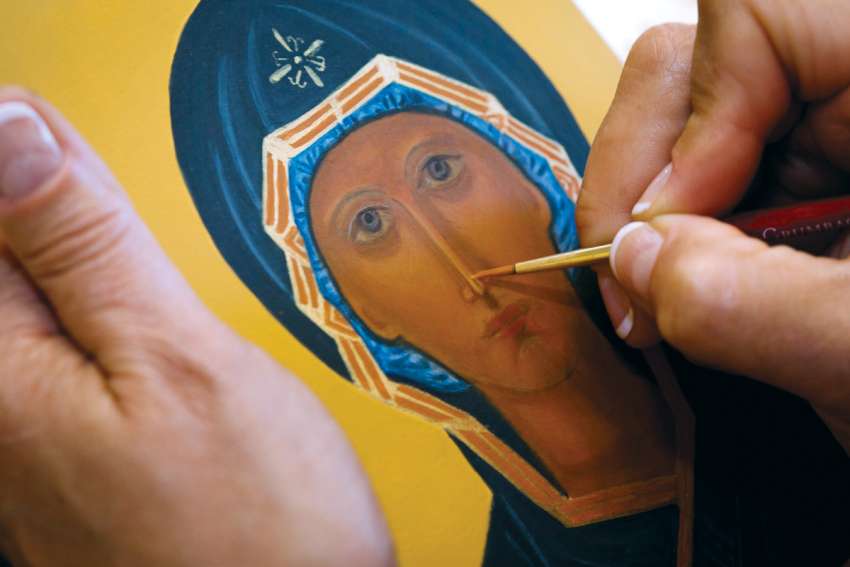The East never dispensed with or replaced their ageless iconography for something contemporary, time-bound or disposable--but we Westerners did. In fact, I grew up in churches with artwork, statuary and interior design (often a gutted wreckovation of a prior elegant design) that reflected fleeting fads. ( I interject here that there are wonderful examples of renovated old churches. The Cathedral of St. Catherine in St. Catharines comes to mind.) Or they were new constructions: boxy, devoid of embellishments, featuring the latest abstract symbols, conceptions and conceits of modern art (often amateurish and even childish), some teetering on brutalism. In a word: ugly.
But I convinced myself I liked these cold offerings, stripped of the ability to evoke either the peaceful or passionate beating heart of a living faith, hope and charity. Why did I approve of these mediocre monstrosities? Because I thought of myself as a thoroughly modern Millie and didn’t want to be some stick-in-the-mud who can’t move with the times and find the profound meaning hidden beneath bleak and barren surfaces. As I look back, I realize how prejudiced I was, how I was blinding myself and denying what I actually found to be beautiful, even if it came from another time.
April 2019 was my breakthrough. I determined in the van that I was going to find an inspiring image of Our Lord and Our Lady--of the Blessed Virgin Mary and Baby Jesus—one that particularly appealed to me, that I would pray with (and bring on all future trips with me). Enough with formlessness and intangibility! Enough with mortifying my need for visuals! I am a tactile human being with five senses! I will have good Catholic art surrounding me!
This turning point was informed by several influences:
1. A story about an Orthodox woman in Eastern Europe who poured out her troubles before an icon of the Theotokos in her home at the end of the day. I always felt something terribly right about this..
2. Fr. Henri Nouwen’s book, “Behold the Beauty of the Lord,” which helped introduce Catholics to praying with icons.
3. One of my Sisters, an artist herself, who decorated her bedroom and office spaces like the Vatican Museums. I once thought this was over the top and against the spirit of poverty, but realized that every time I see a statue of a saint, a Crucifix, etc., I immediately begin praying and communicating with Heaven. It’s an impetus, a reminder. And now I think…why not?! I have followed suit, and my living and workspaces drip with enough holy paraphernalia to make Satan nauseous. Two of my favourite Catholic artists are Michael D. O’Brien and William Kurelek.
Don’t get me wrong. I’m not against modern art. I simply believe that if religious art is not coming directly from the content of the Faith, it will be insipid, and we will feel that. Aristotle said that the purpose of art is to represent the inward significance of things, not their outward appearance. And yet if the objet d’art barely resembles the outward appearance, the connection will be lost, and we will be lost.
John Paul II’s Theology of the Body puts it this way: “the [human] body makes visible the invisible: the spiritual and the Divine,” for “we are His handiwork” (Ephesians 2:10). Human artists should imitate THE Artist, the Creator, who marries form and function, beauty and purpose, immanence and transcendence. Easier said than done, but it’s the mark of true talent. If you find God in modern art…to each his own!
When I finally arrived at my destination in the evening, I heard the sad news about Notre Dame Cathedral. I instantly connected the destruction of this unanimously appreciated, breathtaking sacred architecture with my ruminations and musings of the day. The Way of the Lord is narrow and requires self-denial, but it’s also the Way of Truth, Goodness and Beauty.
Sr. Helena Raphael Burns, fsp, is a Daughter of St. Paul. She holds a Masters in Media Literacy Education and studied screenwriting at UCLA. HellBurns.com Twitter: @srhelenaburns #medianuns


